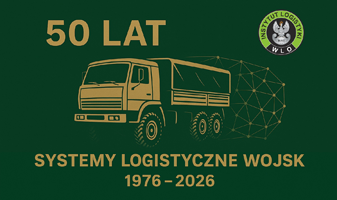ORIGINAL PAPER
COMPARATIVE ANALYSIS OF THE PASSAGE OF A NON-STANDARD MILITARY VEHICLE AND A HEAVY VEHICLE ON A SELECTED EXAMPLE
1
Wojskowa Akademia Techniczna, Wydział Bezpieczeństwa, Logistyki i Zarządzania, Instytut Logistyki
2
Wojskowa Akademia Techniczna, Pion Ogólny, 2 Batalion Szkolny
A - Research concept and design; B - Collection and/or assembly of data; C - Data analysis and interpretation; D - Writing the article; E - Critical revision of the article; F - Final approval of article
Publication date: 2019-12-31
SLW 2019;51(2):43-55
KEYWORDS
ABSTRACT
The purpose of the article is to make a comparative analysis of the planning of the movement of non-standard military vehicles and heavy vehicles. The first part of the work presents statutory requirements for non-standard vehicles. Then, based on the applicable legal regulations, the process of planning the movement of non-standard military vehicles was described. In the further part of the work, a comparative analysis of the passage of a non-normative vehicle and a heavy vehicle was carried out on the example of the same route.
REFERENCES (11)
1.
BRZEZIŃSKI, M., WAŚNIEWSKI, T., & KIJEK, M. (2015). Modelowanie systemu organizacji przewozów w firmie transportowej. Gospodarka Materiałowa i Logistyka, (4), 27-36.
3.
Dz. U. 2016 poz. 279; Rozporządzenie Ministra Obrony Narodowej z dnia 29 lutego 2016 r. zmieniające rozporządzenie w sprawie sposobu i trybu wydawania zezwoleń wojskowych na przejazd drogowy oraz sposobu organizacji i oznakowania kolumn pojazdów Sił Zbrojnych Rzeczypospolitej Polskiej.
4.
GRZELAK, M. (2018). Planowanie przewozu wojsk transportem kolejowym jako element działań na rzecz bezpieczeństwa narodowego. Przegląd Nauk o Obronności, 3.
5.
JÓŹWIAK, A., & BETKIER, I. (2018). Proces planowania przemieszczania pojazdów nienormatywnych z wykorzystaniem aplikacji webowych. Gospodarka Materiałowa i Logistyka. s. 445–451.
6.
PAWLISIAK, M. (2016). System logistyczny determinantem bezpieczeństwa sił zbrojnych Rzeczypospolitej Polskiej. Wojskowa Akademia Techniczna.
7.
MON DGRSZ. (2014). Instrukcja operacyjnego wykorzystania teleinformatycznego systemu monitorowania i położenia wojsk DU-4.4.4.2. Warszawa: Dowództwo Generalne Rodzajów Sił Zbrojnych.
8.
MON DGRSZ (2015). Zasady wojskowego ruchu drogowego DU-4.4.4(B). Warszawa: Dowództwo Generalne Rodzajów Sił Zbrojnych.
9.
ŚWIDERSKI, A., JÓŹWIAK, A., & JACHIMOWSKI, R. (2018). Operational quality measures of vehicles applied for the transport services evaluation using artificial neural networks. Eksploatacja i Niezawodność, 20. (2):2920299
10.
ŚWIDERSKI, A., SKOCZYŃSKI, P., & WAŚNIEWSKI, T. R. (2018). Zastosowanie technologii RFID w pojazdach uprzywilejowanych: propozycja poprawy bezpieczeństwa w ruchu drogowym. Gospodarka Materiałowa i Logistyka.
We process personal data collected when visiting the website. The function of obtaining information about users and their behavior is carried out by voluntarily entered information in forms and saving cookies in end devices. Data, including cookies, are used to provide services, improve the user experience and to analyze the traffic in accordance with the Privacy policy. Data are also collected and processed by Google Analytics tool (more).
You can change cookies settings in your browser. Restricted use of cookies in the browser configuration may affect some functionalities of the website.
You can change cookies settings in your browser. Restricted use of cookies in the browser configuration may affect some functionalities of the website.


